It’s not enough to just Get Artists Paid; it’s time to stage an Art.Exit
The work of Springboard for the Arts is rooted in arts-based economic and community development. We believe artists are critical assets in that work, and support them by offering a variety of resources that enable them to make both a living and a life. This is why Springboard is a member of the New Economy Coalition (NEC): because we believe in the vision of a new economy, one that is just, sustainable, and democratic; one that is ethical and community-rooted; and one that does not rely on the exploitation of disenfranchised communities in order to thrive. This is the second in a series of stories highlighting the work of other arts-based NEC member organizations and affiliated organizations that have developed ways to sustain themselves while also sustaining artists, demonstrating that, yes, a new economy is possible. Read the rest of the series here.
If your business model is entirely based on selling content created by people, yet you claim that you do not have enough money to pay for the creation of said content, there is a fundamental flaw in your business model.
And yet, creatives hear this all the time: monolithic media companies that don’t have the budget for writing or photography; event producers that don’t have money to pay the event’s designers or performers. Over and over (and over, and over) again, people working in creative fields – everyone from photographers to dancers, musicians to muralists, web and graphic designers, writers, performers, and chefs – are asked to forgo traditional compensation for their work (i.e., money) and instead accept payment in the form of almighty exposure.
“Exposure:” the promise that, by doing this particular project for free, other companies will see it – via this particular company’s vast and expansive social media reach – and one pro bono project will turn into many, many paid gigs; fame, fortune, etc.
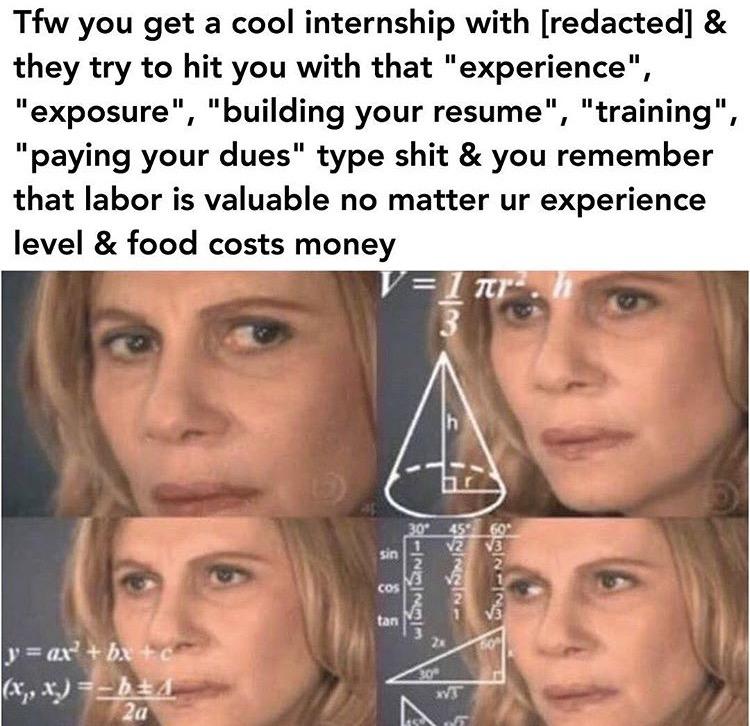
Spoiler alert: it doesn’t work that way. It has never worked that way. And companies, whose very business models are dependent on the work of these creatives, continue to exploit the work of creative industry workers and profit off of them, all while promising them sweet nothings.
About three years ago, Ada Rajkovic (now in Los Angeles) and Luna Olavarria Gallegos (now in New York) said enough is enough. They formed Get Artists Paid, now Art.Exit, in response to the huge push they saw online demanding just compensation for artists (designers, photographers, writers, visual artists, and so on) doing work for media outlets and major brands.
They created a Facebook group to hold certain brands accountable, where anyone working in creative fields could come together, share information, and talk openly about the economics of their work – finances, payments, expenses.
“No Budget but Great Exposure” from Get Artists Paid on Vimeo.
“With us being a majority online platform we’re in a different space to be able to react and engage,” Rajkovic says. “We have a lot of people who are young artists who really look to us as this valid force of advocacy for artists, and look to us for information about the art world because we do so much research that we then share to enhance people’s awareness of what’s happening.”
They consider Art.Exit to be primarily an advocacy and educational group. They undertake expansive research projects, lead media strikes, keep a database of text and film that educates people on corporate power in the art world, and encourage imagination through advocacy. Through their research projects alone, they have thousands of lines of data that map out the intricacies of financial leadership in the art world, showing things like the connections between museum trustees and major corporations, political donations, and government relations.
“These people have so much wealth and because they have that wealth they also have political power,” says Rajkovic. “They are very much involved in all these different aspects of controlling society, and the art world is just another way they do that.”
They also encourage conversations about that thing that many artists spend a good amount of their time and energy worrying about: money.
Get Artists Paid! from Get Artists Paid on Vimeo.
“A lot of times we’re told as artists and as people of color that we shouldn’t talk about this,” says Olavarria Gallegos. “Most of the people I spend time around are really struggling; they’re low income people of color. On an individual level people have various different backgrounds regarding finances and wealth; we’re just not transparent about them. There’s no sharing around how much we make, but we need that. There’s so much shame around sharing in our society.”
“We’re also so controlled by money; it’s this thing that’s not even real and we can’t talk about it but it gives us so much anxiety,” Rajkovic adds. “People don’t want to talk about the fact that they have another job or get help from their parents. There’s a lot of shame around not being young and successful. That’s crazy!”
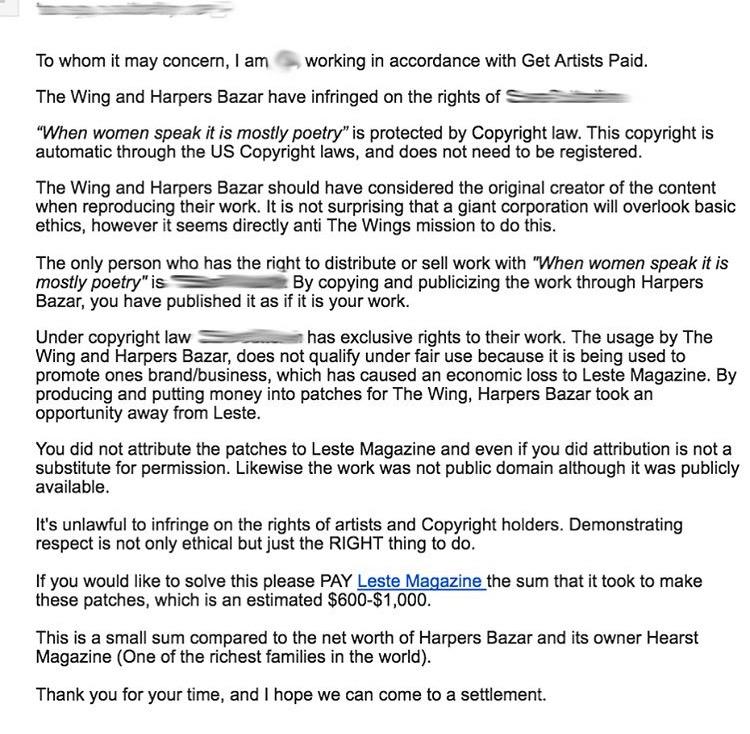
Get Artists Paid, she explains, was about demystifying money in a way that would enable artists to openly talk about it, because the way companies get away with not paying people is by workers not talking about the wages they’re earning so that the inequity is not visible.
As a result of those conversations around compensation, they realized shady practices were going on, so they reached out as a grassroots agency to brands, organizations, and institutions that weren’t paying artists, using legal jargon and acting as representatives of these artists in order to demand payments.
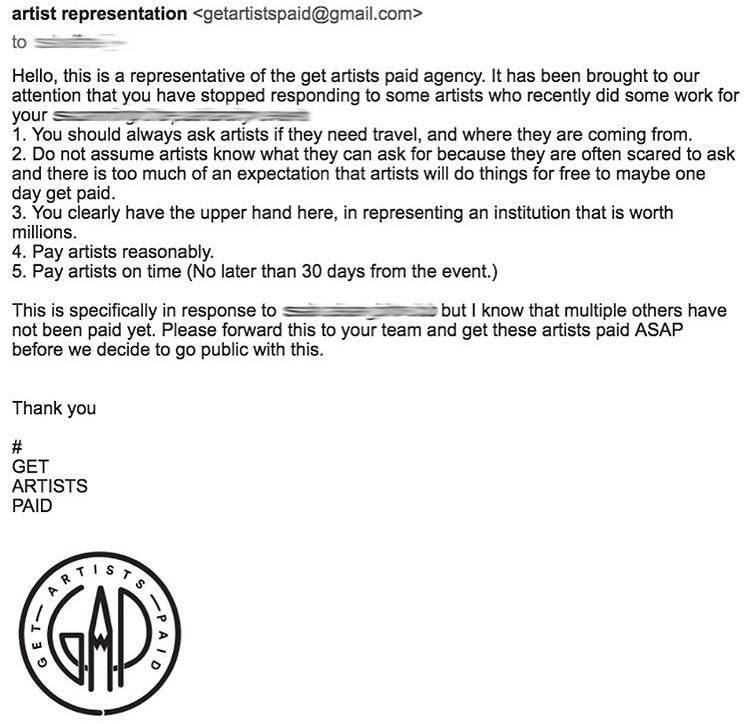
While major media outlets and brands aren’t solely at fault, a major sticking point for many creatives is the multi-billion-dollar international corporations claiming they have “no budget for content” and instead offer compensation in the form of “exposure.” Companies like Vice Media.
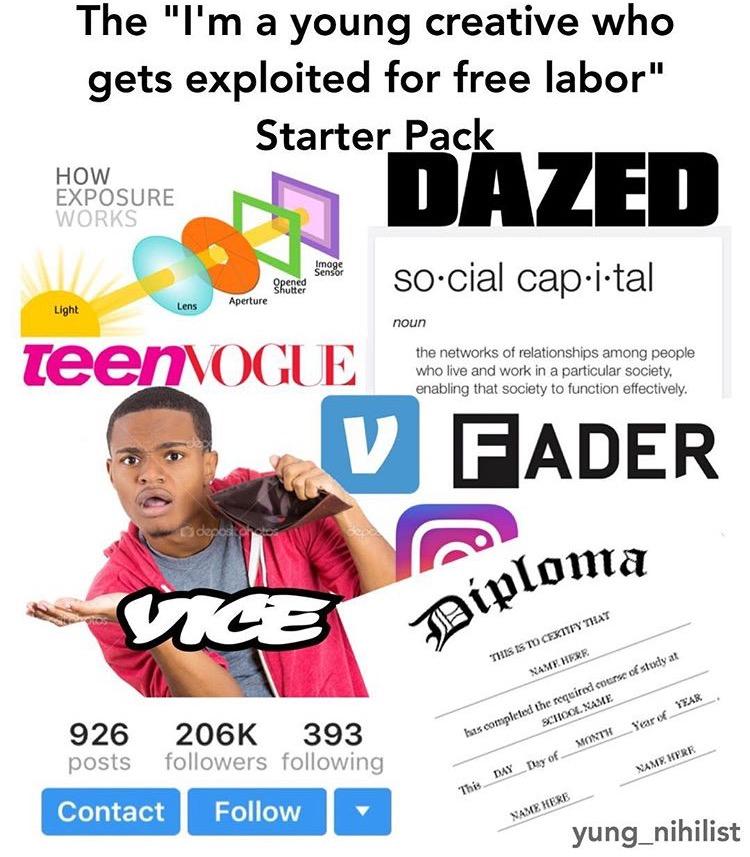
“Vice Media tries to legitimize itself through its young Millennial audience, but it’s owned by several corporate entities, including Fox News,” says Rajkovic.
So Art.Exit organized a strike against the massive corporation that is notorious for not paying contributors fair wages, offering a mere pittance for their work (if anything at all).
They also conducted some in-depth research into the company, following the money trail to expose the company’s real funding sources.
Media I$ Complicit: Vice Strike! from G.A.P. on Vimeo.
“This was a way to delegitimize Vice because it has this reputation of being cool and being for young people, so it produces this fallacy that it’s not corporate or that it’s different from other media outlets and that it’s independent, and it’s really not,” Rajkovic continues. “Maybe when it started out it was, but their interests align more financially than with actually enlightening people. We just wanted to expose that and expose how it’s all just a big marketing campaign and that they don’t pay artists.
‘But there’s a lot of clout around Vice. People think, ‘Oh, the exposure will get me somewhere; they have really cool parties, maybe I’ll meet someone.’ We wanted to demystify and delegitimize the clout around it, and that’s the first step to get people to maybe stop working there and stop reading anything they produce.”
“If you’re not getting paid and you’re a poor artist of color and doing something for Vice for free, why?” Olavarria Gallegos asks. “At what point do you acknowledge that you can’t live on your work? We can’t keep working for exposure. People think they can’t afford to boycott but they have to make a living, and these corporations don’t even pay us most of the time.”
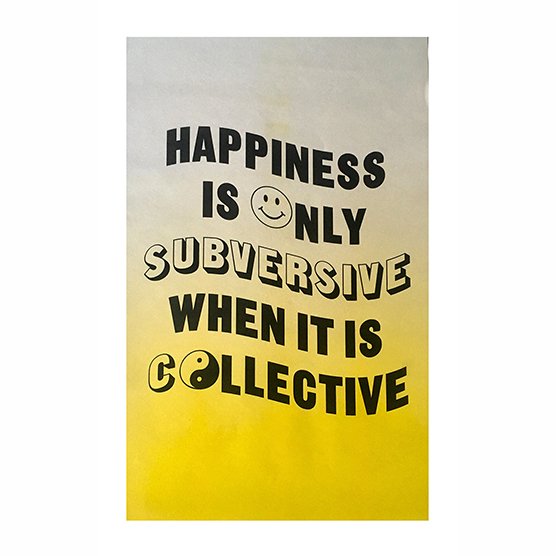
They decided to change the name of the organization from Get Artists Paid to Art.Exit to reflect the fact that it’s not enough just to get artists paid; the art world itself, with museums’ histories rooted in colonial conquest, the exotification other cultures, and exploiting people of color, needs to be demystified and delegitimized too.
“Art.Exit is about being so fed up in realizing that the art world is not going to change because it functions under capitalism and will never be a good thing for artists collectively,” says Rajkovic. “We continued to research and delved into this idea that these media companies, museums, and other sectors of the creative economy are run by the richest people in the world, the global elite. We know they can pay us but they won’t because they don’t have to. They are not doing anything illegal and they can get away with it because artists are pitted against each other.”
Art.Exit is about “exiting” the art world, rejecting the oppressive capitalist system in which the institutional art world exists, and getting people to think differently about art – about what is valuable as art and what isn’t, and that an artist doesn’t have to be legitimized by these institutions to be valuable.
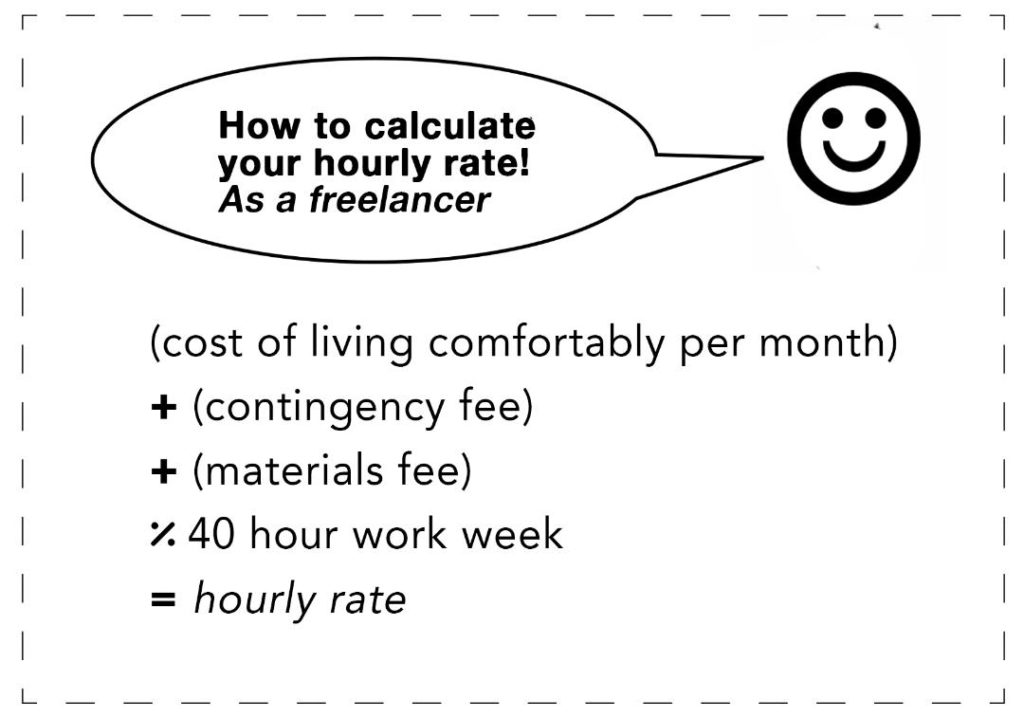
“We’re trying to challenge people our age who went to art school and are rising in the art world to look beyond the current structures – museums, foundations, and so on – to be validation for us because they don’t represent the people; they represent the one percent,” Olavarria Gallegos states.
Art.Exit, Rajkovic says, is more explicitly anti-capitalist, and with little institutional support over the last few years they have been able to pull together an abundance of information with help from their sizable network of volunteers.
“[Our network] speaks to the inspiration that people get from this,” she states. “There’s the stereotype that youth don’t really care, or that they are really naïve and lazy, but so many people are so inspired by this information and share it with their own networks.”
While social media is equally as corporate as major media companies like Vice, it has also thus far proven to be a uniquely effective tool in galvanizing people, enabling community members to share information in ways and with a level of ease they never before were able to, and use that information to uncover serious social issues and launch whole social movements. Art.Exit is just that kind of social movement.
